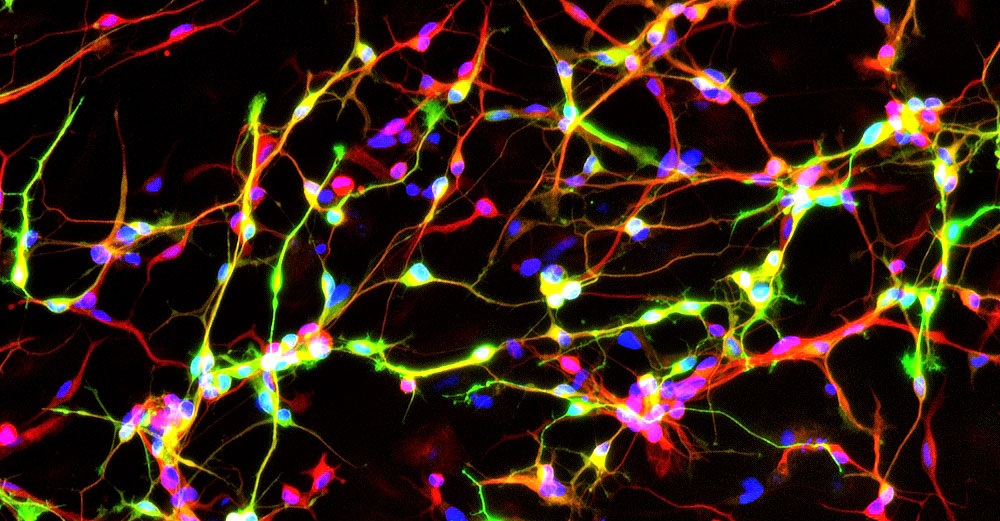Image shows a protein found only in neurons (red) and an enzyme that synthesizes dopamine (green). Cell DNA is labeled in blue.
Parkinson’s Disease is a disorder of the central nervous system which causes a variety of symptoms such as tremors, stiffness and slowing of movement. It was largely brought to the public eye after actor Micheal J. Fox (Back to the Future, Teen Wolf) went public with his diagnosis in 1998. It is a progressive disorder, which means it grows worse over time and as of yet there is no cure. But hopefully that will soon change. Parkinson’s disease researchers at the Jacobs School of Medicine and Biomedical Sciences at the University at Buffalo recently took huge steps forward in researching this life-altering affliction.
For years medical researchers have known that finding a way to repair faulty dopamine neurons and put them back into patients was the key to Parkinson’s research. Medical professionals have tried a variety of options including fetal material. But although embryonic stem cells were a huge innovation, they are hard to get, and their process is long with a slow turn around. So researchers tried to do something new: turn cells that are easy to get, such as skin cells, into dopamine neurons.
And now UB researchers have found a way to “ramp up” this conversion. They discovered that p53, a transcription factor protein, acts as a gatekeeper protein. In a news release statement from the University at Buffalo, Jian Feng, PhD, senior author and professor in the Department of Physiology and Biophysics in the Jacobs School of Medicine and Biomedical Sciences, explained their discovery.
“We found that p53 tries to maintain the status quo in a cell, it guards against changes from one cell type to another,” explained Jian Feng “We found that p53 acts as a kind of gatekeeper protein to prevent conversion into another type of cell. Once we lowered the expression of p53, then things got interesting: We were able to reprogram the fibroblasts into neurons much more easily.”
The advance has importance to basic cell biology, Feng said. “This is a generic way for us to change cells from one type to another,” he said. “It proves that we can treat the cell as a software system, when we remove the barriers to change. If we can identify transcription factor combinations that control which genes are turned on and off, we can change how the genome is being read. We might be able to play with the system more quickly and we might be able to generate tissues similar to those in the body, even brain tissue.
“People like to think that things proceed in a hierarchical way, that we start from a single cell and develop into an adult with about 40 trillion cells, but our results prove that there is no hierarchy,” he continued. “All our cells have the same source code as our first cell; this code is read differently to generate all types of cells that make up the body.
“We found that the point in the cell cycle just before the cell tries to sense its environment to ensure that all is ready for duplicating the genome, is the prime time when the cell is receptive to change.”
With this huge research step forward now those who suffer from Parkinson’s, including actor Micheal J. Fox, are that much closer to seeing a cure.




